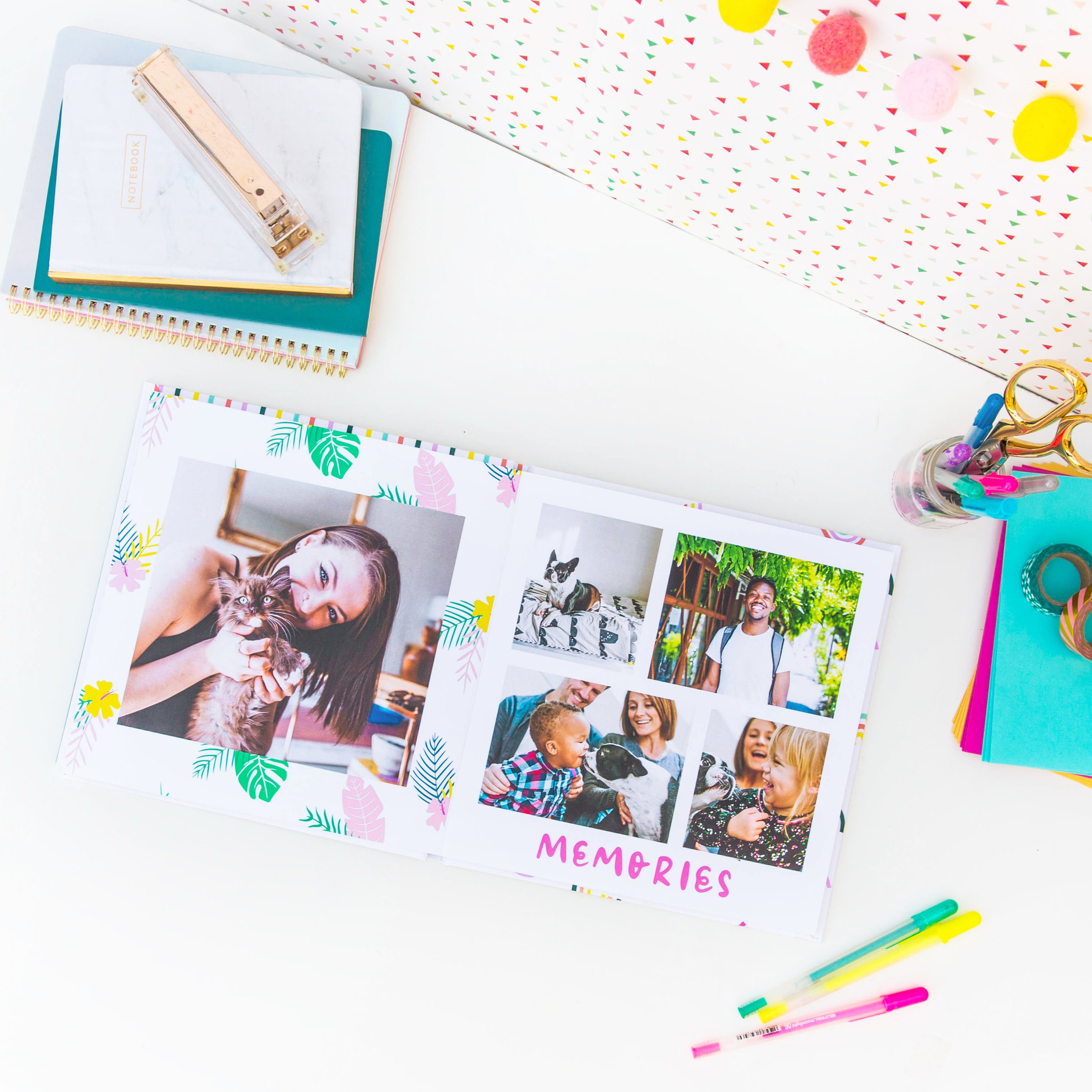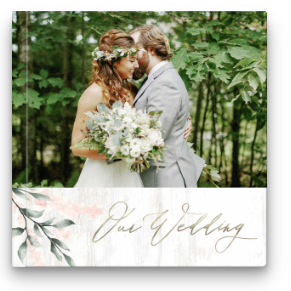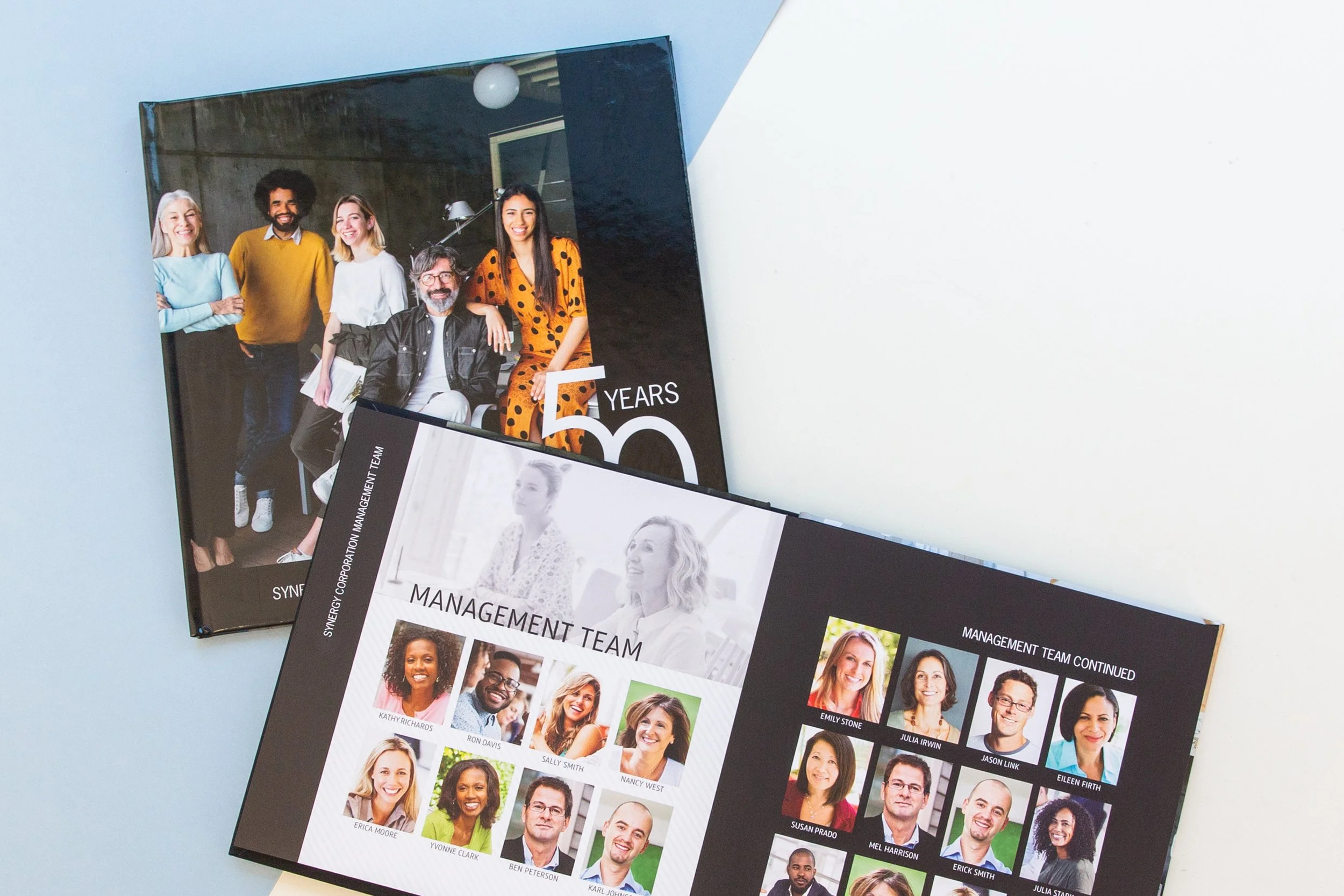Share Your Story for Future Generations: How to Create an Archival-Quality Photo Book
The Gutenberg Bible is the world's oldest surviving printed book. It has stood the test of time thanks to a combination of long-lasting materials and careful preservation. Today, we all have the power to tell our stories in our own books. Anyone can preserve their history so it can be appreciated by generations to come — whether it's a family photo book, a book to remember a loved one, or a wedding photo book. But, if you want your photo book to stand the test of time like the Gutenberg Bible, you'll need to craft an archival-quality book from tested and proven materials.
What is an Archival-Quality Photo Book?
Archival-quality books are crafted from long-lasting, acid- and lignin-free materials that resist deterioration. They're designed to last anywhere from 70 to 100+ years with proper storage. Remember that even though these books use high-quality materials, archival-quality photo books must still be protected from light.
Mixbook's lustre paper is a great choice for your archival quality photo book — it's acid and lignin-free and has been independently tested for longevity by Wilhelm Imaging Research and is rated as "age resistant," meaning it will last for more than 200 years.
Reasons to Craft High-Quality Photo Books
There are many reasons to make archival photo books for yourself and your family. You might want to chronicle your family's history for future generations. Maybe you're graduating from college or getting married. All the big moments in life deserve to be captured in archival-quality photo books.
Preserving your shots in a photo book protects them so that they can be enjoyed in the future. Mixbook also stores a digital copy of every photo book a customer orders. That means you can print as many copies as you need. If your photo book is ever lost or damaged, you have the reassurance of knowing you can order another.
Creating a Narrative with Photos & Design Elements
A variety of Mixbook tools can help you nail the perfect design for your project. Start by choosing a theme that reflects the purpose of your photo book. For example, you might choose the Bold Modern Wedding theme for a book about your big day. Start with a Blank Canvas if you want to create a design from scratch.
Your photo book title is important too. Pick something that
communicates the purpose of the book,
tells when the book was printed, and
captures your personality.
If you don't want to include the year of printing in your title, be sure to include it in captions or other text in your book. It's helpful for organization and informative for future generations who browse your heirloom creation.
How to Choose Photos to Include in Your Archival Photo Book
The right images make or break any photo book. If your digital photos are hard to sort through, start by organizing them. Then, choose pictures that tell a clear story. Some basic story ideas include chronicling a special event or creating a year-in-review photo book.
Be sure to include photos of the people, places, and things that are important to you. Include captions so there's no confusion about who's in your photos or where they were taken. You should also be sure to include the date, or at least the year, when the photo was taken.
Use high-resolution images that look crystal-clear when you zoom in on them or increase their size. If your photos are stored in Facebook albums or online storage services, make sure to transfer or download the highest-quality version available. Don't right-click on photos on social sites to save them — you'll generally get a lower-quality file that will look blurry in your finished book.
Of course, you may be working with old prints or Polaroids that aren't in ideal condition. You can use this handy guide to learn how to scan and digitally preserve old photos. If prints of photos are damaged or need extensive retouching, you may want to hire a professional to convert them for you. If you can't replace all the low-quality photos, keep their size small and add information-rich notes.
Incorporating Captions into Your Design
Including photo captions in your layout eliminates confusion. It also makes your photo book a valuable historical document for future humans. Keep captions simple if you're aiming for an archival-quality creation. The best captions are descriptive, consistent, and detailed. Try to answer the Five W's that journalists and essayists follow:
Who is in the picture?
What is happening in the picture?
When was the picture taken?
Where was the picture taken?
Why was the picture taken?
For example, you might caption a photo "Grandma June Lin opening a New Year's Present from her niece Julia at her home in Detroit, Michigan, February 2021." Give your viewer information that tells the story behind the photo.
Choosing the Right Materials for High-Quality Photo Books
To be considered archival quality, a photo book must be printed with acid-free ink on acid-free/lignin-free paper. The reason is that papers with acid and lignin (a compound found in plants and wood pulp) are yellow and break down with age. Printing inks need to be acid-free so that they don't 'contaminate' the paper and cause deterioration.
The highest-quality photo books also feature durable covers and are kept in sturdy storage boxes. You'll customize your cover and paper choices when you order through Mixbook. You can choose from an array of sizes, but we recommend the 10x10" or 12x12" options for maximum visual impact.
Papers & Finishes
The term paper finish describes the texture of a piece of paper. It's the most important factor in making a photo look either glossy (lustrous) or matte (flat). Mixbook offers five different paper finishes. For an archival-quality photo book, choose one of our two lustre papers:
Signature Lustre offers a glossy finish with low glare and good color quality. It's a great choice if you want to create a coffee-table book or a photo book with magazine-style pictures.
Premium Lustre boasts a glossy, low-glare finish with superior color quality. Images look crystal-clear on this ultra-thick paper, making it a great choice for yearbooks and recipe books.
Cover Styles
Mixbook offers softcover, hardcover, and lay-flat photo books. While the softcover option is great for casual books, we don't recommend using it for your high-quality photo book. The soft, flexible cover will be susceptible to bending and tearing over time.
Both hardcover and lay-flat photo books are great choices when you want to make a long-lasting book. They're durable and attractive. The lay-flat option also includes a high-quality storage box that you can use to protect your photo book from damaging light.
Lay-flat books are always finished with a matte cover. Hardcover books can be finished with either a matte or glossy cover. The matte cover is the ideal choice for a high-quality photo book because it resists fingerprints and smudges.
Storage
The Mixbook photo book storage box is designed to protect your book from light and dust damage.
If you choose a lay-flat cover, your photo book will ship to you in a protective box. If you choose a hardcover photo book, it's a good idea to buy an acid-free box to store it in. This will help protect it from light without introducing acids or lignins to your photo book.
The fact that you should store your photo book to preserve its archival quality doesn't mean that you can't look at or enjoy it. Just be sure to put your photo book back in its box after looking through it. You should not display an heirloom photo book on your coffee table or in well-lit areas.
Opting for a Physical Photo Book in a Digital World
We live in an increasingly digital world. The majority of Mixbookers store their photos in computer- or cloud-based albums. You can look at the images whenever you want, but it's not the same as holding a real, physical book in your hands.
Printed photographs and photo books seem more real because printing can capture details and nuances that even the most-advanced digital screen can't. Physical photo books are also a tangible reminder of who you are and where you've been. You can enjoy them regardless of changes to digital storage systems or power and internet outages.
High-quality, printed photo books truly stand the test of time. Crafting a high-quality photo book with Mixbook lets you become your own documentarian. Your next archival creation is just a click away — it's time to start brainstorming!













